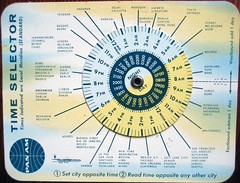By Caitlin Kelly

This was the week I thought my head — like the watermelon in The Day of The Jackal — would simply explode.
Too many people needed too many things from me, all done without delay and without error, handled with grace and aplomb, all at once.
Last Saturday, Jose and I attended a fantastic day-long conference in Manhattan, oddly enough in the same building he works in daily, at the New York Times’ Center, a bright, airy auditorium that faces an inner courtyard filled with tall birch trees. It was a social media summit, and included speakers from BBC, the Times, ad agencies and even reporters from Russia and Iran.
I found the whole day fascinating — rare for any conference.
It was also the perfect time to chew over the ethics and issues of crowd-sourced reporting after the bombing in Boston. A young student, Sunil Trapathi, had been mistakenly identified on social media as a possible culprit — his body was found in the Providence, RI Harbor last week.
The conference audience was a mix of students, working journalists from such legacy media outlets as The Atlantic and the popular NPR radio show Fresh Air, think-tank types and social media experts. There was much hand-wringing about how to do better reporting faster and better. Is social media helping or hurting?

Here’s an analysis of why this went so terribly wrong so quickly, from the atlantic.com:
the names that went out over first social networks and then news blogs and websites were not Tamerlan and Dzhokhar Tsarnaev, which the Federal Bureau of Investigation released early this morning. Instead, two other people wholly unconnected to the case, became, for a while, two of America’s most notorious alleged criminals.
This is the story, as best as I can puzzle it out, about how such bad information about this case became widely shared and accepted within the space of a couple of hours before NBC’s Pete Williams’ sources began telling the real story about the alleged bombers’ identities.
The story begins with speculation on Twitter and Reddit that a missing Brown student, Sunil Tripathi, was one of the bombers. One person who went to high school with him thought she recognized him in the surveillance photographs. People compared photos they could findof him to the surveillance photos released by the FBI. It was a leading theory on the subreddit devoted to investigating the bombing that Tripathi was one of the terrorists responsible for the crime.
I spent all week fine-tuning this story in today’s New York Times’ business section, the fifth published there in a year, my best run anywhere, ever. It’s a story I proposed many months ago, reported in the frigid depths of February in Montreal, followed up with many phone and email interviews along the way.

It’s a profile of Ubisoft, the fourth-largest video game maker in the world, with 7,540 employees worldwide and 2,500 in their Montreal studio — 82 percent of them male.
I had never played a video game when I pitched the story, really more interested in a French company operating in 26 countries and how they manage creativity.
Tuesday, my editor at Ladies Home Journal rejected six of the 12 (!) sources I’d found for my story. I had no time to handle this, and she’s quitting next week. I threw it to my poor overloaded assistant, with an email whose subject line started with the sincere word URGENT.
Wednesday evening at 6:30, an editor I’d pitched a day earlier said yes to a story — as long as it was delivered by Monday. Sure, no problem.
Jose, my husband who is a photo editor there, met me at the Times and took this new headshot. (Thanks, honey!)
I went down to Bizday and said hello to the people I’ve worked with there.
Thursday was an entire day at the ASJA annual conference, listening to a wide array of editors, (hoping to find new markets), and catching up with friends from all over the country, many with new books to promote and one waiting to hear if he’s won a big fellowship, with only 12 awards to be made among 36 applicants.
The young man sitting at the next table during one session was a winner of the fellowship for which, last December, I was one of 14 finalists (of 278 applicants.) Gah.
Friday morning was an almost impossible juggling act of incoming and out-going emails and phone interviews, (with a lobbyist in D.C., then a Kentucky senator, then an interior designer), while the Times’ copy desk and my editor pelted me with last-minute questions, (necessitating more fact-checking calls and emails to sources in Montreal and Los Angeles.)
In an oddly fortunate coincidence, two of my current assignments focus on aging, so I learned a lot, some of it immensely helpful for my own future, and my readers. In conversation with the Kentucky senator, I learned of a possibly really interesting feature story, which is often where I get my ideas.
I emailed Stacy Zoern, about whom I wrote for the Times last week, and asked if I can come out to Austin, Texas to do a much longer and more detailed story about her. She said yes.
Now I just need to find another editor with a travel budget and some serious money to spend!




